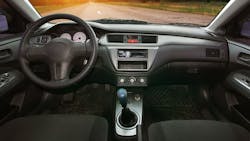Should DDS be the Base Communication Framework for Self-Driving Cars?
It’s become essential to have the ability to link multiple dynamic applications in platforms ranging from unmanned aircraft systems (UAS) to self-driving cars. That capability is the driving force behind the Object Management Group’s (OMG) Data Distribution Services (DDS) scalable architecture.
DDS—a data-centric, publish-subscribe system—tends to be more robust and extensive than that found in some operating systems. The standard, which provides interoperability between DDS systems, is designed to be a distributed system without a single point of failure. It works equally well in application environments like the Internet of Things (IoT).
Because DDS middleware allows decoupling of data from communication, applications can focus on the processing of data. It handles details like data and service discovery. The data-centric architecture simplifies collaboration between developers and suppliers. Distribution of applications is easier, too, and it can support duplication of services for redundancy.
Real-Time Innovations’ Connext DDS can be applied in a range of applications, including self-driving cars.
Real-Time Innovations’ (RTI) Connext DDS (see figure) is capable of delivering microsecond latency. It can be used to tie together sensors and control for complex systems like advanced driver-assistance systems (ADAS) through self-driving cars. Connext DDS also supports ISO 26262 safety certification and has been used in avionic systems that require DO-178C certification. Furthermore, it’s possible to partition a system so that certification can be done on a subset of a system, where critical operations and data are utilized while linking to non-critical, non-certified system components.
Connext DDS builds on standard protocols like TCP/IP and UDP. The system, which can use UDP broadcasts to efficiently distribute data to multiple devices, supports quality-of-service (QoS) for guaranteed latency. In addition, it can be employed to integrate data from a CAN bus, such as high-bandwidth LIDAR and radar sensors. Connext even supports Time-Sensitive Networking (TSN).
The middleware now includes fine-grained security that’s part of the DDS standard. Encryption or authentication can be applied to published data versus simply using an encrypted link in many IoT applications. This can reduce encryption overhead, since it only needs to be applied to data that must be encrypted or authenticated rather than all information. For example, security may only be needed on control information, but not status information.
Connext DDS works with an extensive range of operating systems and many real-time operating systems (RTOSs). It integrates with tools such as MATLAB, Simulink, and UML. And clients can be lightweight enough to run on microcontrollers.
About the Author
William G. Wong
Senior Content Director - Electronic Design and Microwaves & RF
I am Editor of Electronic Design focusing on embedded, software, and systems. As Senior Content Director, I also manage Microwaves & RF and I work with a great team of editors to provide engineers, programmers, developers and technical managers with interesting and useful articles and videos on a regular basis. Check out our free newsletters to see the latest content.
You can send press releases for new products for possible coverage on the website. I am also interested in receiving contributed articles for publishing on our website. Use our template and send to me along with a signed release form.
Check out my blog, AltEmbedded on Electronic Design, as well as his latest articles on this site that are listed below.
You can visit my social media via these links:
- AltEmbedded on Electronic Design
- Bill Wong on Facebook
- @AltEmbedded on Twitter
- Bill Wong on LinkedIn
I earned a Bachelor of Electrical Engineering at the Georgia Institute of Technology and a Masters in Computer Science from Rutgers University. I still do a bit of programming using everything from C and C++ to Rust and Ada/SPARK. I do a bit of PHP programming for Drupal websites. I have posted a few Drupal modules.
I still get a hand on software and electronic hardware. Some of this can be found on our Kit Close-Up video series. You can also see me on many of our TechXchange Talk videos. I am interested in a range of projects from robotics to artificial intelligence.


